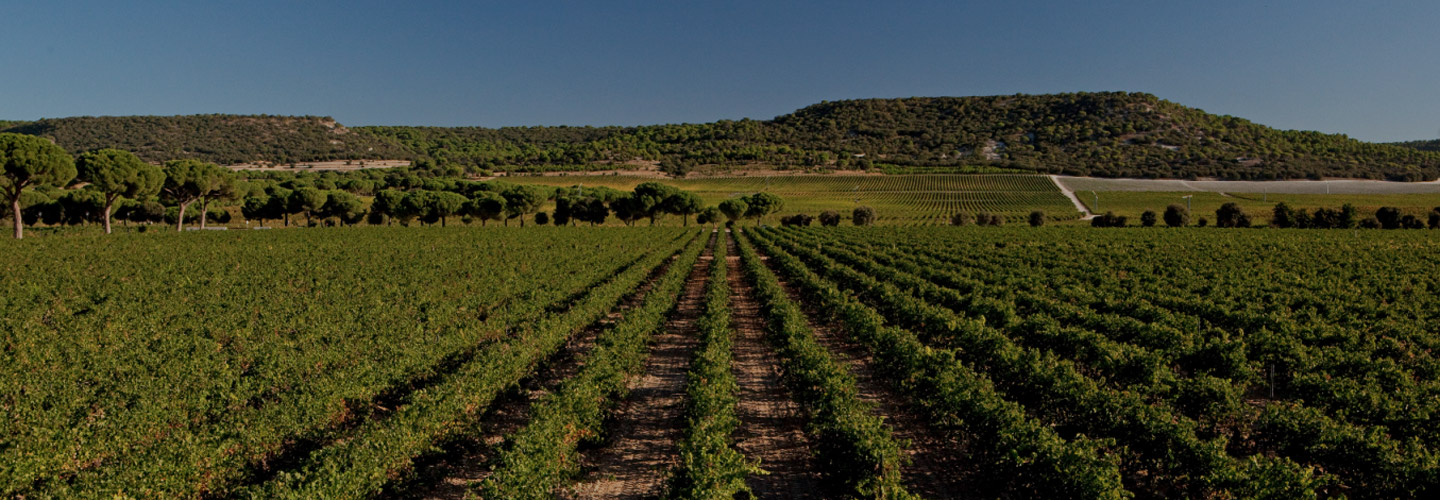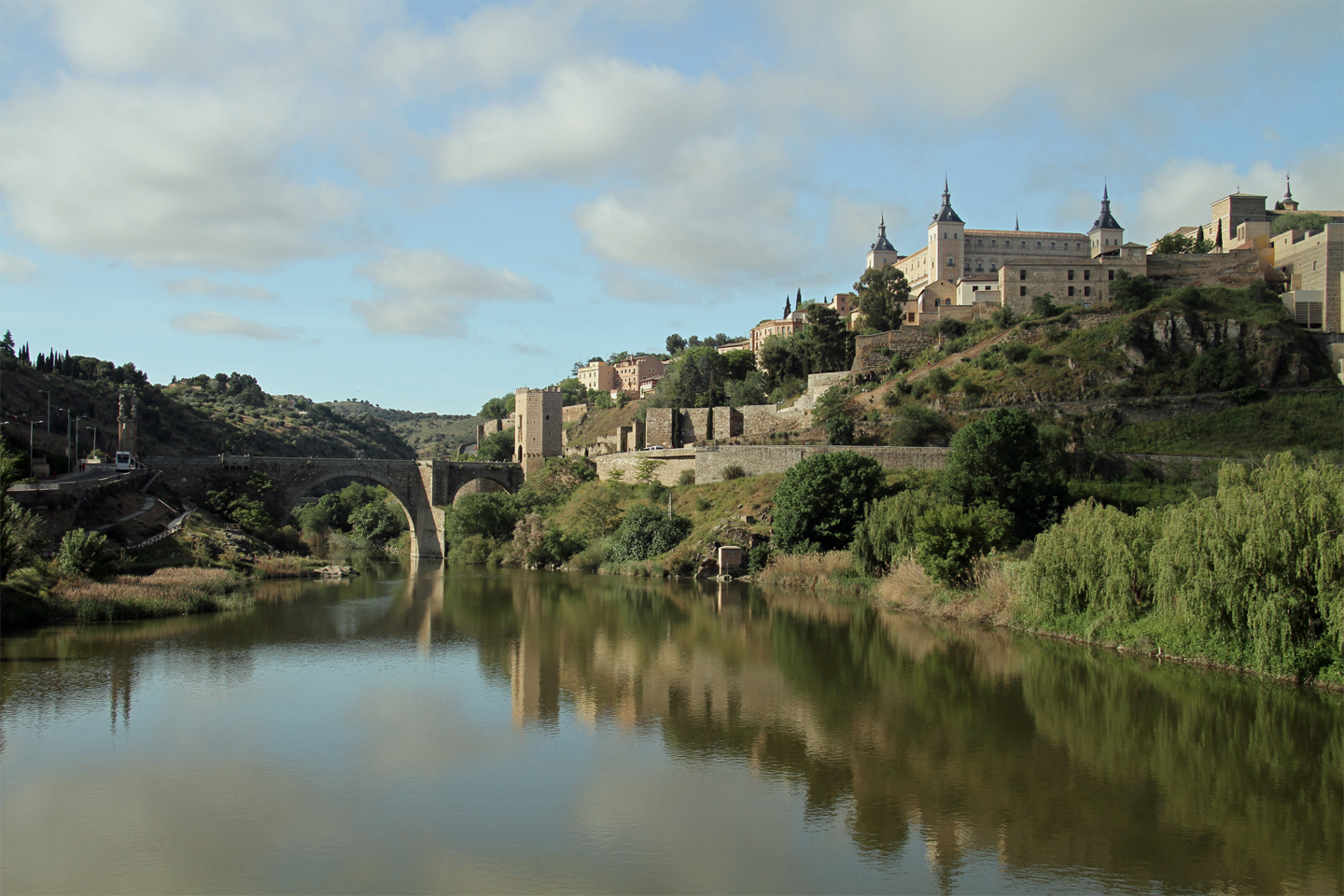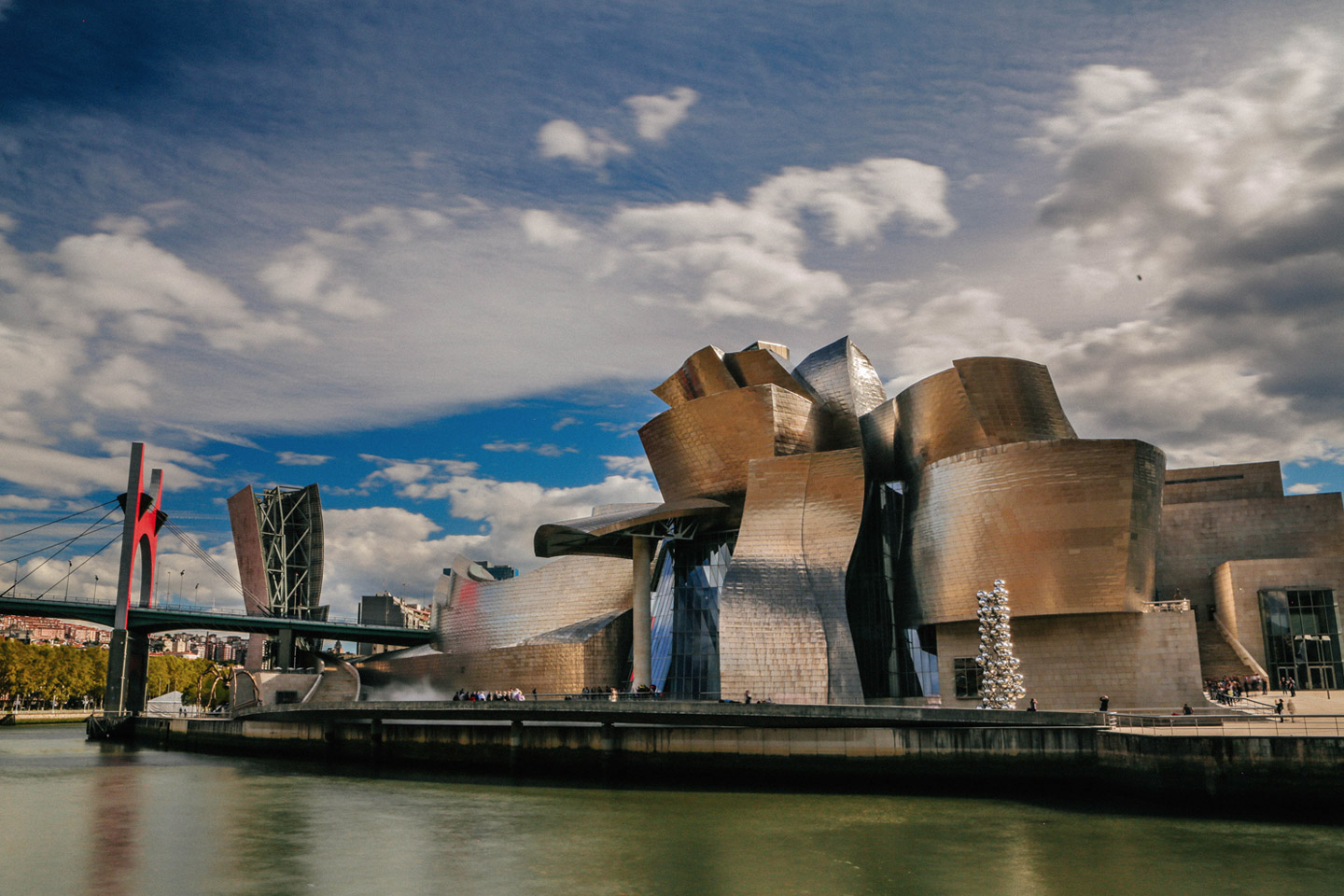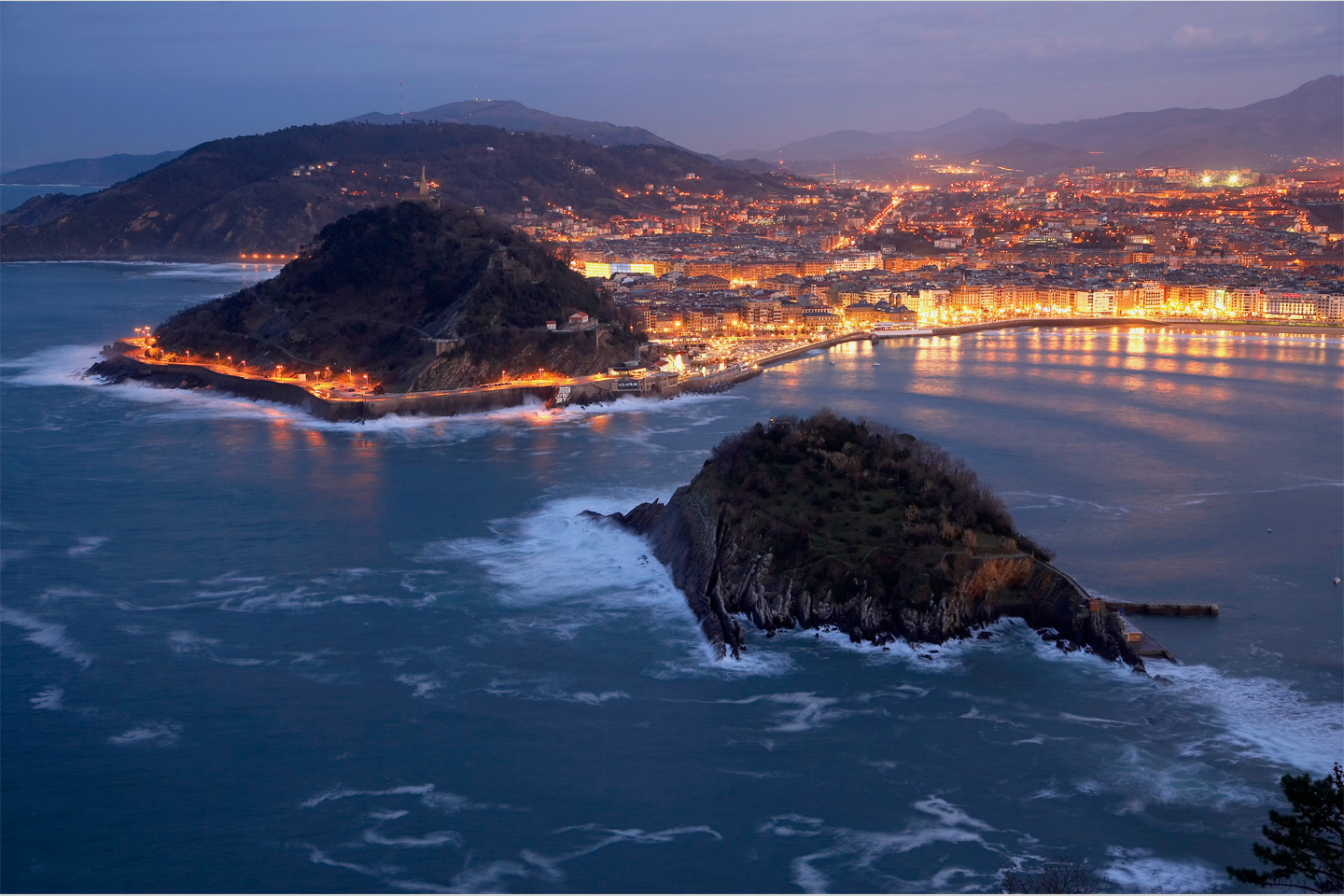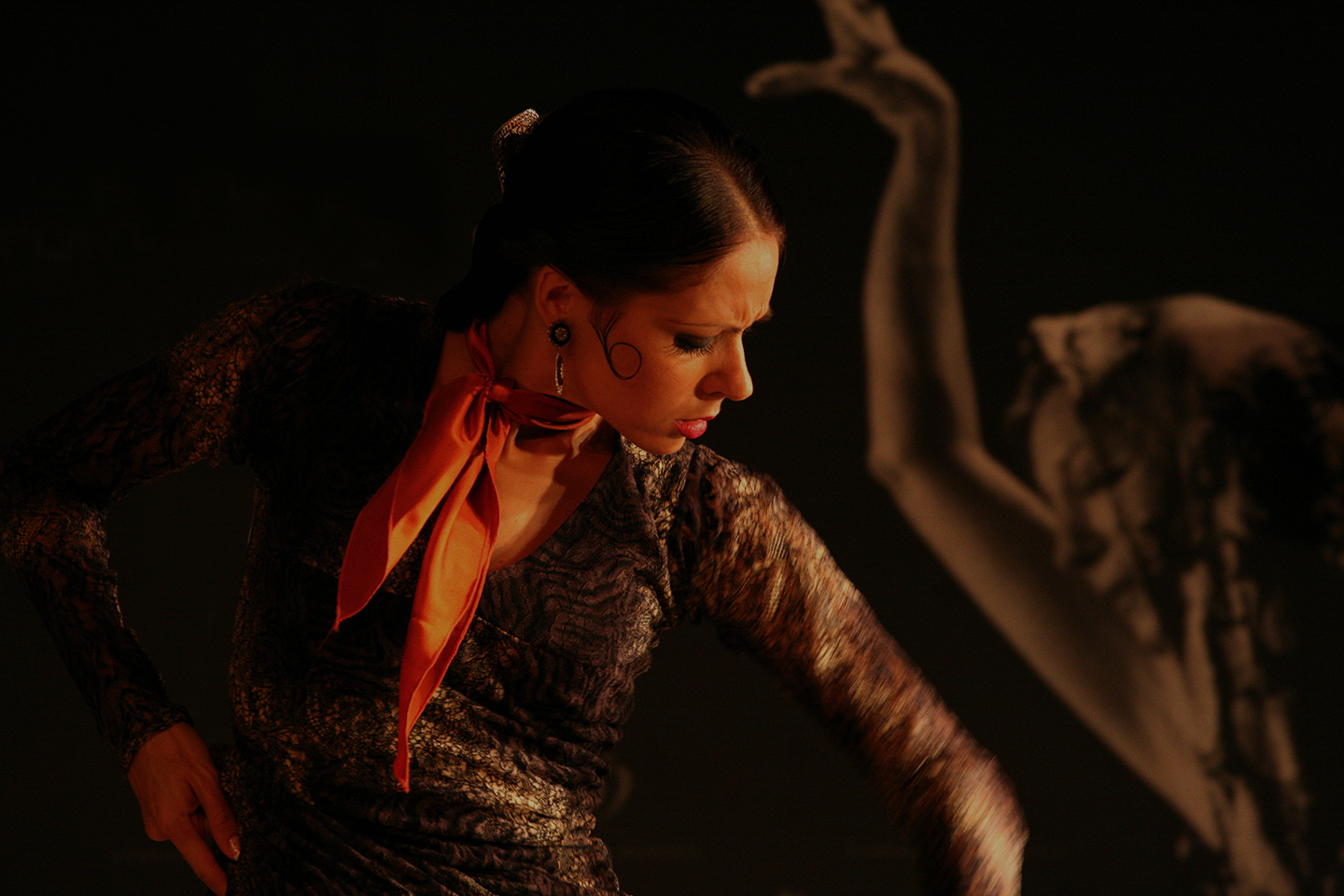The love of good food and good wine is not a surprise when talking about Spain. This itinerary will take you through a route of the senses, starting from Madrid, the capital, and up to San Sebastian. From tapas and vermouth to pintxos and txakolí, through the most famous wine regions of Spain, the Ribera del Duero and La Rioja, you can discover the diversity of landscapes, culture, way of life, flavors and... much more!

DIVE INTO THE WORLD OF WINE
Day by Day Itinerary and suggested Accommodation
Day 1: Arrival in Madrid.
2-night accommodation at Pestana Plaza Mayor ****
Day 2: Visit Madrid. During the day you could visit the most emblematic areas of Madrid, from the Madrid de los Austrias district to the most picturesque and lively avenues and squares such as the Gran Vía, the Barrio de las Letras, the Retiro Park or Puerta del Sol. You can also visit monuments such as the Royal Palace or the Prado and Reina Sofía Museums. If you ask us, we can also reserve a place at night to enjoy the best flamenco show in the capital.
Day 3: Rental Car and self-drive to Ribera del Duero region visiting Segovia on the way. It will take about 1h10 from Madrid to Segovia. Upon arrival in Segovia, we suggest visiting its gems like the impressive Roman aqueduct, considered a World Heritage Site by UNESCO; the beautiful Cathedral, called "the lady of the cathedrals"; and the magnificent Alcázar Fortress where you can enjoy a panoramic view of the landscape of Segovia. Do not leave the city without trying the typical roast suckling pig!
After visiting Segovia, continue your road trip to Ribera del Duero. This region is a natural jewel that will surprise you in every way and where you can enjoy some activities related to wine and gastronomy. We suggest taking the day off or visiting the facilities of your accommodation, a former abbey where a hotel and a winery are located, and where you can make a tasting of its wonderful wines.
2-night accommodation at Abadía Retuerta LeDomaine *****
Day 4: Explore Ribera del Duero Wine Region. You can visit the city of Peñafiel, its Castle and Provincial Wine Museum, the Monastery of Valbuena and, above all, the most modern wineries, whose architectural design has been made by international architects, and the most traditional ones, some still excavated in the stone. The endless landscapes of vineyards of the Ribera del Duero will remain forever in your retina.
Day 5: Self-drive to La Rioja. The journey takes about two hours from La Ribera del Duero. We suggest you making a stop in the city of Burgos to visit its incredible Gothic cathedral on your own. After visiting this city on the way, continue towards the La Rioja region. Upon arrival in La Rioja, we suggest you have the day off to enjoy the facilities of your accommodation.
3-night accommodation at Viura Hotel ****
Day 6: Explore La Rioja. Enjoy an independent trip out of the ordinary in La Rioja, far from the crowds. You could visit on your own some picturesque villages nestled in the hills, beautifully preserved medieval towns and fantastic vineyard landscapes. There is a great variety of history to explore in this scenic region to give up a real atmosphere from another era. You could visit towns like Laguardia, Briones, San Vicente de la Sonsierra or Elciego. As well, as the main point of the trip, you could visit different boutique wineries, family-run properties, modern design wineries, etc. During the day you could have your lunch in some winery or traditional restaurant in the surroundings and also visiting the famous Station Neighborhood in Haro, the capital of the area.
Day 7: Day at leisure in La Rioja. Take the day to enjoy your hotel's facilities, visiting some winery or just relax and the beautiful sunsets in La Rioja Area.
Day 8: Transfer to San Sebastian. It takes approximately two hours to reach San Sebastian from La Rioja. Located on the east coast of the Basque Country, we suggest having a free day around the Old Town and enjoying a pintxo route (as tapas are called in the Basque Country).
3-night accommodation at Villa Soro ****
Day 9: Explore Zumaia & Getaria village. Just down the coastline from San Sebastián is a beautiful, unique village, rich in food culture and history, and an unforgettable stretch of coast famous for its “flysch” rock formations. YOu could visit Zumaia’s famous beaches and Getaria, the picturesque nucleus of fishing, txakoli winemaking, and grilled seafood.
You can start at Zumaia’s famed flysch, spectacular rock formations in the Basque Coast Geopark. Explore this geological wonder and the beach made famous in Game of Thrones, before making our way to the little-known gem of Getaria. Still one of the most important entry points in the Basque Country for fresh tuna and shiny Cantabrian anchovies, you can stroll through its cobblestone streets.
Do not leave the village's surroundings without visiting some Txakolí winery and trying a delicious grilled fish!
Day 10: Day at leisure in San Sebastian. We suggest visiting a museum like the Chillida Leku; walking along the Concha bay; doing hiking to Igueldo mount, or visiting Pasaia & Hondarribia villages, located right at the French border.
Day 11: Check-out and drop off of the rental car at the San Sebastian Airport. Depart from San Sebastian Airport.

CITIES AND TOWNS ON THE ITINERARY
If you wish to know a bit more about the places to go
Madrid: Strategically located in the heart of the Iberian Peninsula, it is the Capital City of Spain and therefore, one of the most touristic and important cities of the country. Because of its central location and high altitude, the climate of Madrid is characterized by warm dry summers and cool winters. Madrid is a city of great monuments. Among its highlights are the medieval center dating back to the Habsburg Empire and the Prado Museum. As the capital, Madrid is home to the Royal family, the Spanish Government and many other national institutions. The town has a long and fascinating history and all over Madrid, there are monuments and museums of great artistical value. It is a city full of life where travelers will feel welcome. Enjoy the street life and the numerous tapas bars and cafes where you will enjoy the “madrileños” passion for life.
Segovia: An important city during certain periods in history. It was a trading center during the Roman Empire and it reached its highest peak during the Middle Ages when it was an important center of livestock and textile activity. During this period, it acquired its rich Romanesque heritage. Due to these attributes, the old quarter of Segovia and the Roman aqueduct are considered World Heritage Sites by UNESCO. Inside the walls of the city, you can visit the Cathedral, one of the last Gothic buildings to be erected in Spain. You can also take a walk in the Caballeros neighborhood and admire several wealthy state houses and palaces of noble families. From the Alcázar Fortress, you can enjoy a panoramic view of the landscape of Segovia. Don’t miss out trying the famous delicacies special of this region the roasted lamb and the roasted suckling pig.
La Ribera del Duero region: If there is a wine region in Spain that has achieved international prestige in recent decades, that is undoubtedly Ribera del Duero. Located mainly in the province of Valladolid, two hours north of Madrid, some of the most famous wineries in Spain are concentrated in this area. This Denomination of Origin extends for about 115 kilometers on both banks of the Douro River, encompassing the provinces of Valladolid, Burgos, Soria and even a small area of Segovia. There are more than 50 wineries that can be visited in Ribera del Duero and the Tempranillo variety is the top priority, although the Regulatory Council allows the use of other varieties, such as Cabernet-Sauvignon, Merlot, Malbec and Garnacha Tinta, and with the exclusivity of Albillo for white wines. From a historical point of view, it should be noted that wine production in this area of Spain dates back more than 20 centuries, back to the time of the Romans. But it has been during the last century when the most modern elaboration systems have been learned. Thus, compared to the previous production of table wines, Ribera del Duero is currently synonymous with high-quality wines.
La Rioja region: Well known for its wineries with over 500 of them, and internationally famous for the great quality of its wines. The smallest region of mainland Spain, bordered by Navarre, Castile & Leon and Aragon. One of the most important wine-growing areas of Europe, it has a reputation bigger than its land area. Extending along the Ebro River, the region is practically split into two, Rioja Alta which has a great deal of rainfall and has a mild climate, and Rioja Baja which is a hotter and more arid area, similar to Aragon. The province capital, Logroño links the two areas. The most popular places to visit are Logroño and Haro, known for their wineries. Apart from the wine, this region has a lot of cultural attractions and amazing natural attractions with Mediterranean forests, high-mountains areas and beautiful landscapes.
Basque Country: Located in northern Spain, is well known for its really diverse landscapes. Between wild and isolated beaches, kissed by the Atlantic Ocean, and high and Rocky Mountains, you will be captivated by its natural wonders. Rich in History and Culture, Basque Country has its own language, the Euskara, considered one of the oldest languages of Europe. Due to the ocean breeze, you can expect moderate temperatures, even when the rain falls – something that is not so rare among the region.
San Sebastian: A charming and romantic city. The Concha Bay is its most iconic site, with a big promenade along the sea, where locals and tourists go to enjoy the beautiful view. Keep in mind that San Sebastian is the place where you will like to eat. The city, besides being popular among surfers, is also well known for its remarkable culinary scene: from the seven restaurants in Spain awarded with 3 Michelin stars, three are in San Sebastian.
